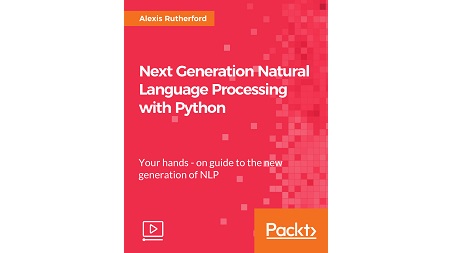
English | MP4 | AVC 1920×1080 | AAC 48KHz 2ch | 1h 56m | 381 MB
Practical techniques and methods to analyze your text data. Power your decision making using next generation libraries.
The company you work for has accumulated a lot of valuable data from its customers, all stored as text, and you need to extract some value from that data. You’ve spent a lot of combined time writing about what they want but no-one knows what they have written about and no-one has the time to read all the messages.
This course empowers you to know how to attack this and other text analysis problems to unlock value for your organization. You’ll start by seeing how NLP can help you extract useful information from large collections of text data, and how you can use the latest Python libraries for NLP. Then we’ll show you how to solve a practical problem using NLP by building a spam SMS detector. You’ll also learn to convert words into numbers that can be analyzed.
Moving on, we’ll teach you how to accurately label new documents to get an accuracy score and cluster your data together. Finally, you’ll see more advanced analysis and will model text by using vector space models and semantic parsing to break down the components of a sentence. You’ll also work with neural networks and learn how to write believable text.
This course dives straight into simple examples to make the power of NLP immediately apparent. It covers the most important concepts and definitions in a clear and concise manner. These concepts are then put into practice through several real-world worked examples.
What You Will Learn
- Explore the NLP techniques and understand what they can do to help you
- Turn text into numbers using the new NLP libraries in Python
- Perform different techniques to categorize text data
- Cluster similar text documents together using Gensim
- Accurately label new documents to get an accuracy score
- Extract meaning and insights from text data such as vector space models
- Use semantic parsing to break down the components of a sentence
Table of Contents
Getting Started with Natural Language Processing (NLP)
1 The Course Overview
2 NLP and Its Uses
3 Statistical Analysis of Language – Counting Versus Understanding
4 Exploring Different Types of Text Data
5 NLP Libraries in Python and Installation
A First Text Classifier – Detecting Spam SMS Messages
6 Finding and Loading Spam SMS Data
7 Preparing SMS Data for Analysis and Training a Classifier
8 Classifying Messages, Evaluating, and Testing
Text Tricks, Definitions, and Heuristics#
9 Understanding Text as Noisy Data
10 Splitting Documents into Parts
11 Turning Words into Numbers
Categorizing Text Documents#
12 Supervised Learning Refresher
13 Supervised Learning Refresher (Continued)
14 Building a Pipeline in scikit-learn to Categorize News Articles
15 Optimizing a Classifier Using GridSearchCV
16 Deploying a Trained Model in Production
Unsupervised Learning for Text
17 Finding Structure in a Text Corpus
18 Understanding Gensim for Efficient Topic Modelling
19 Creating a Corpus and Extracting Topics
20 Evaluation of Topic Models
Implementing Advanced NLP Methods
21 Working with Vector Space Models
22 Implementing Semantic Parsing
Resolve the captcha to access the links!